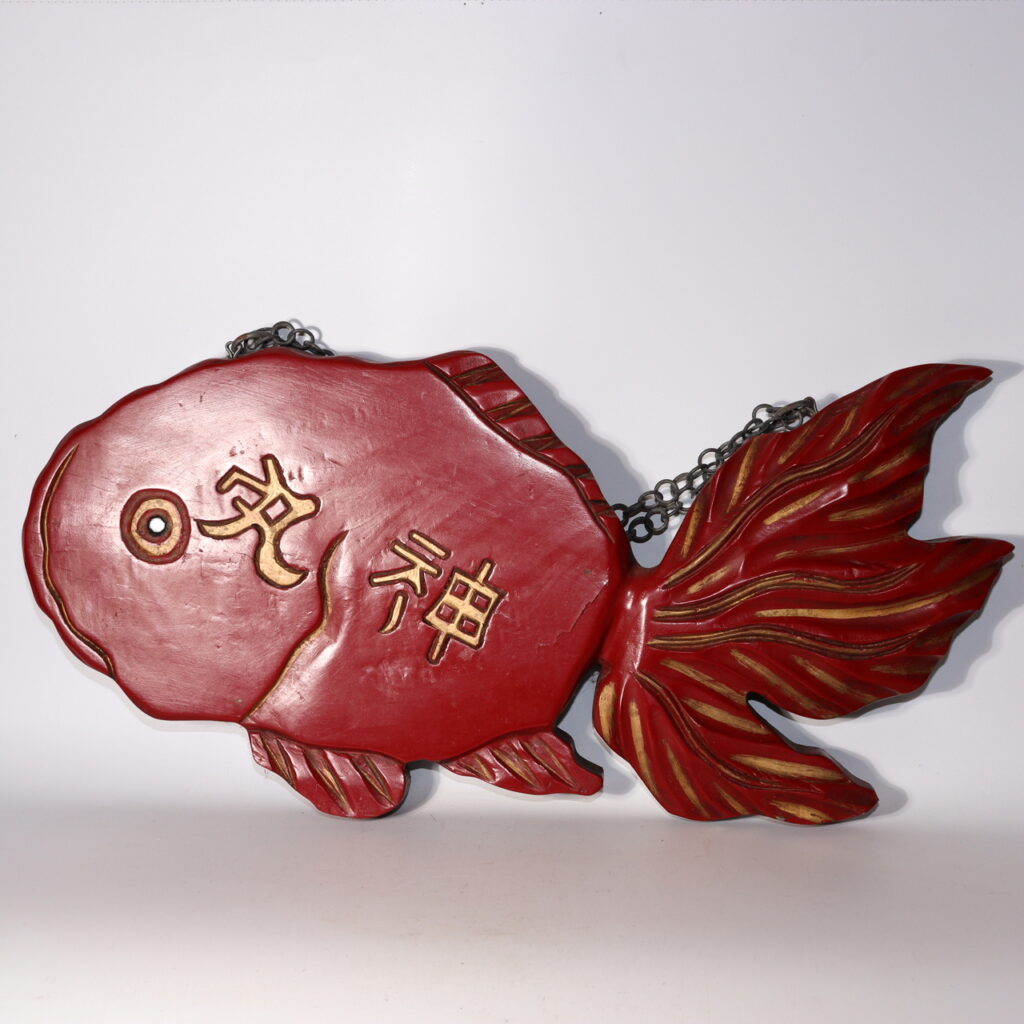
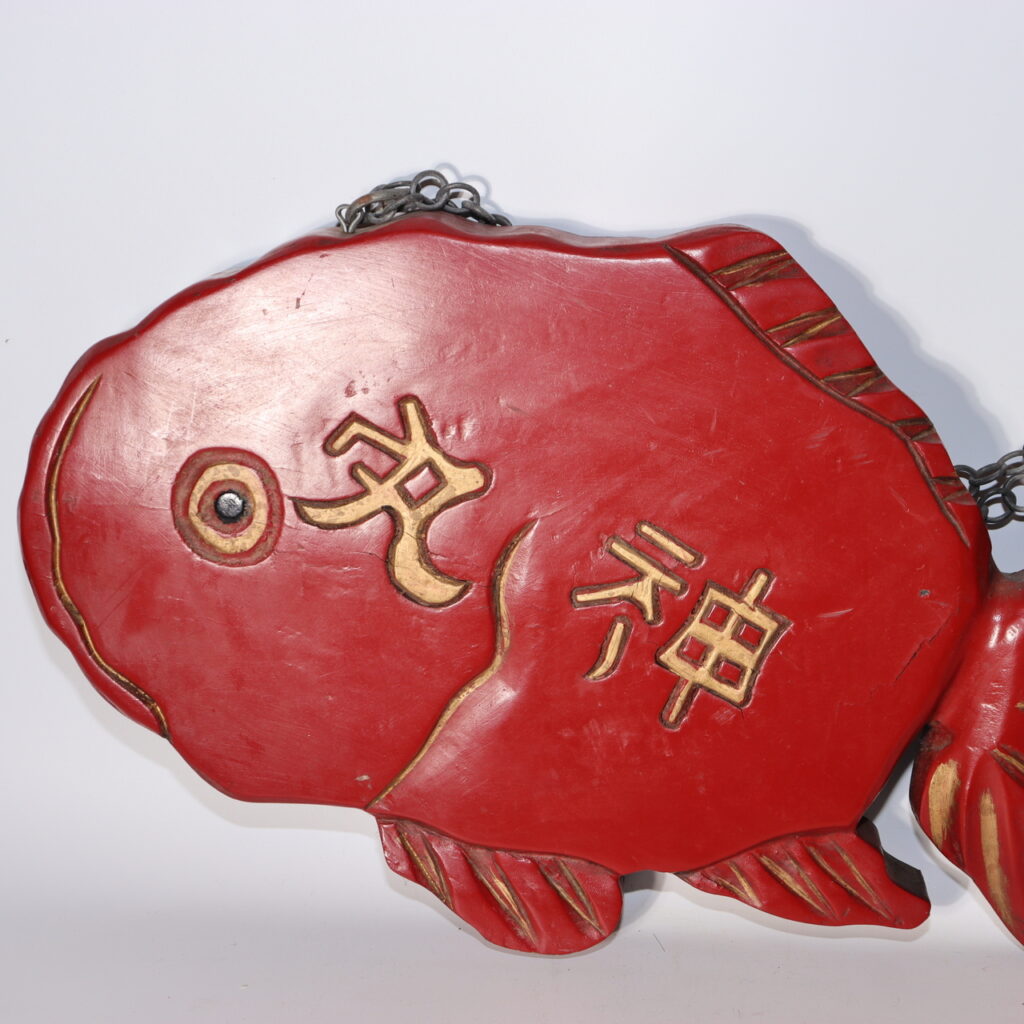
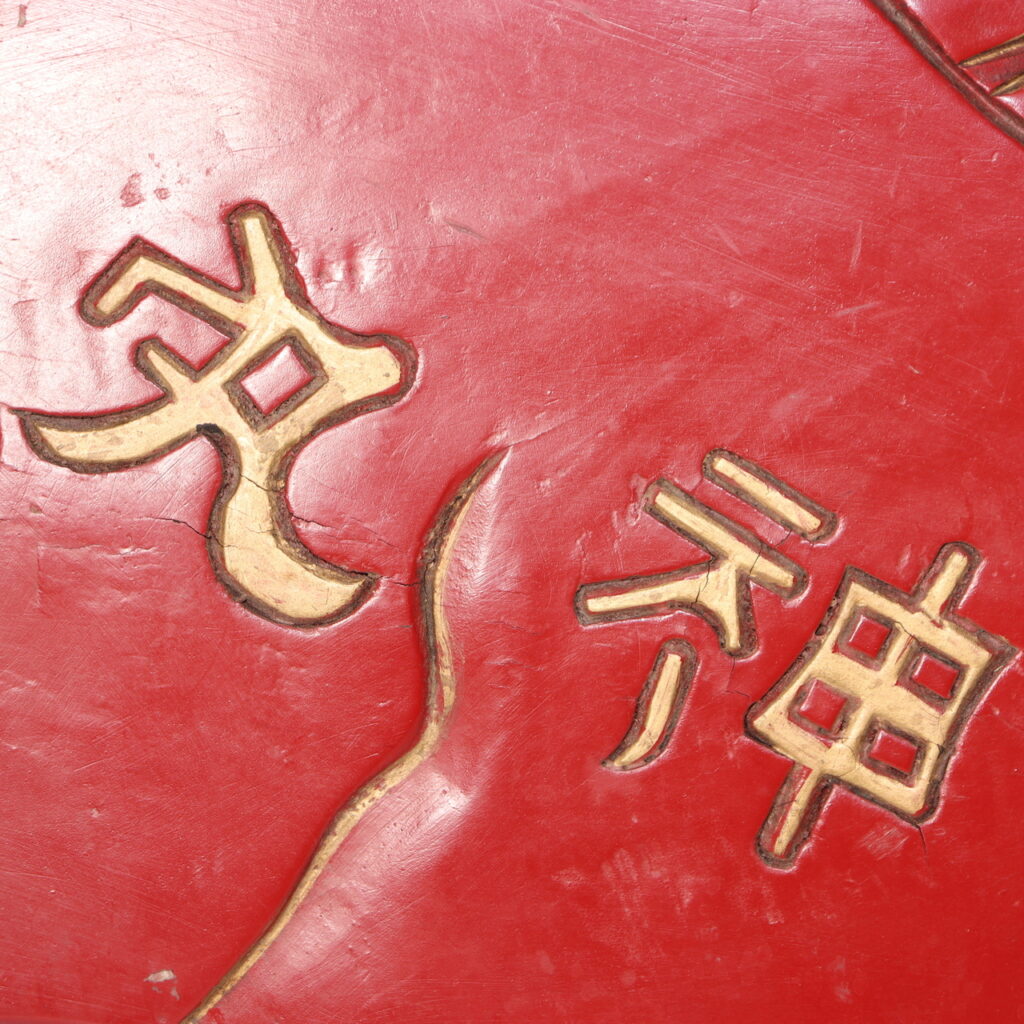

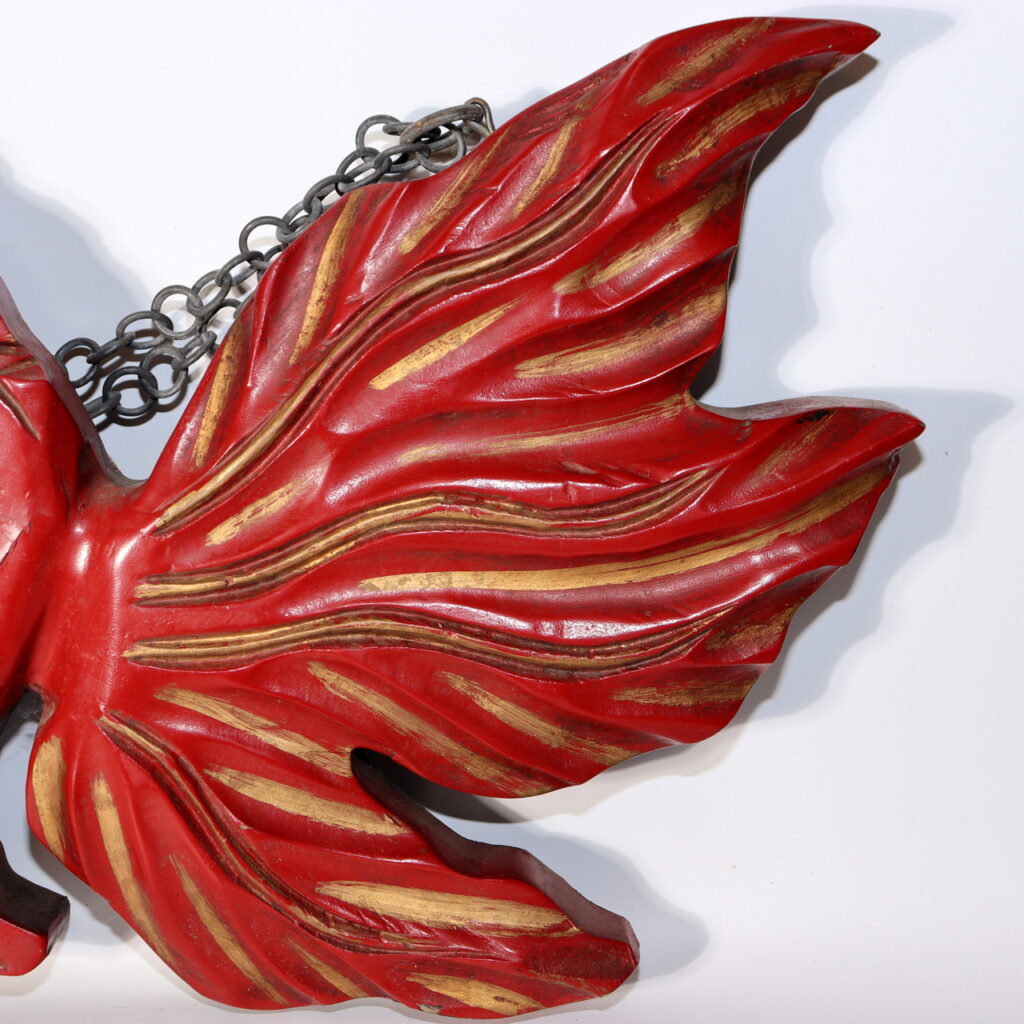

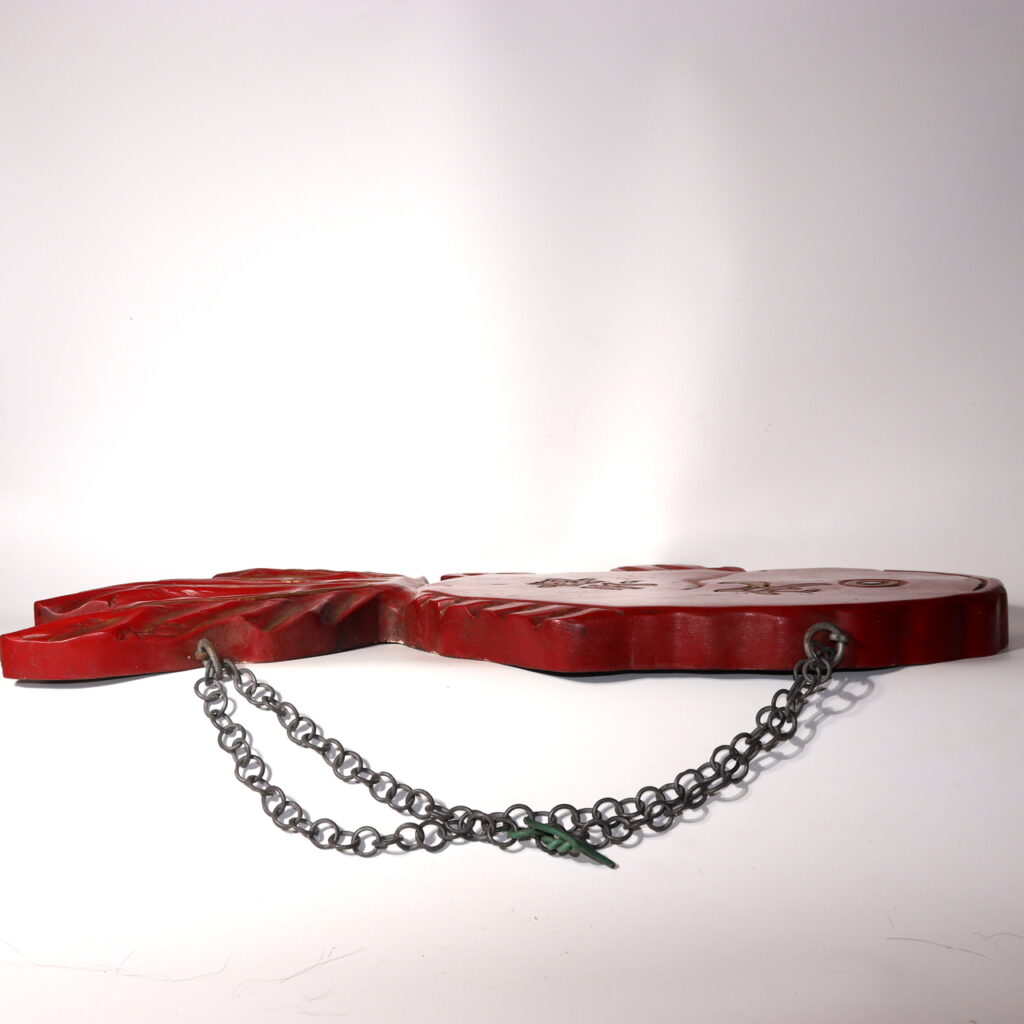
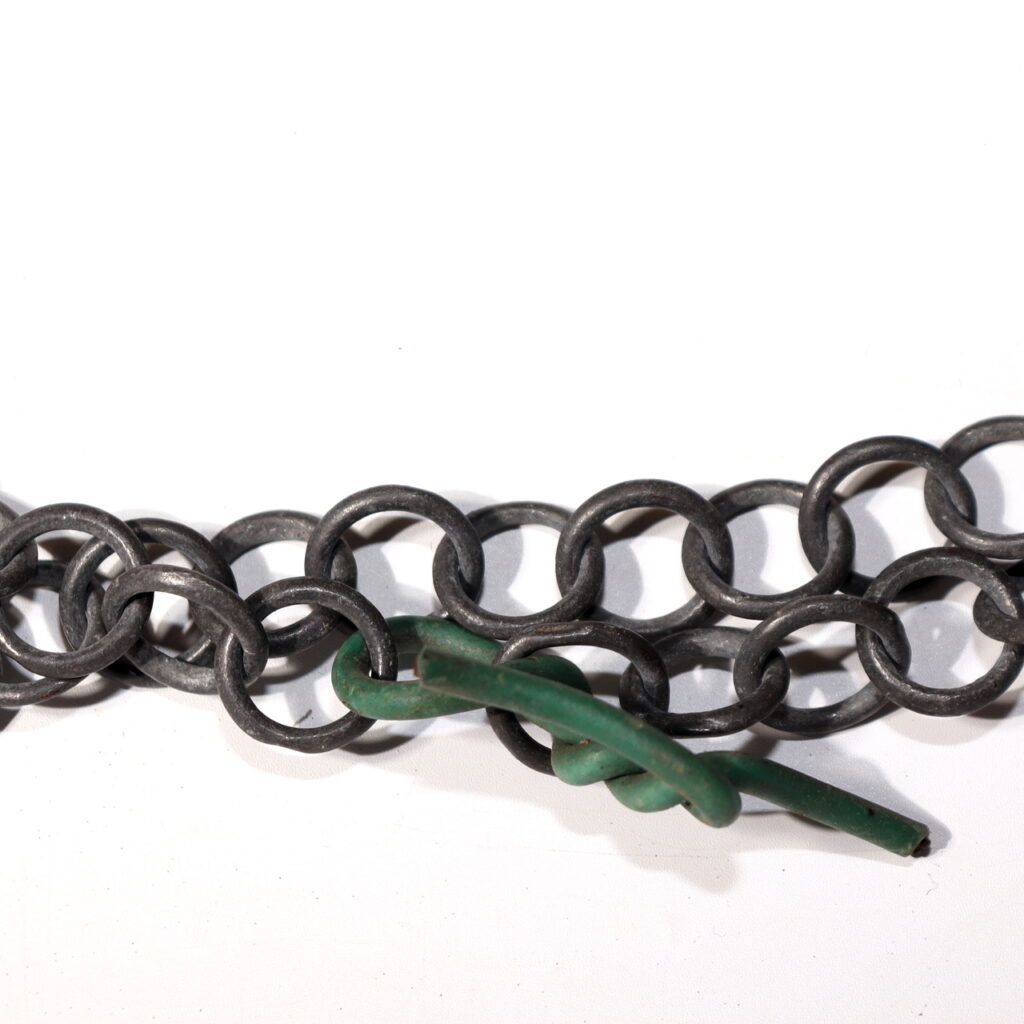
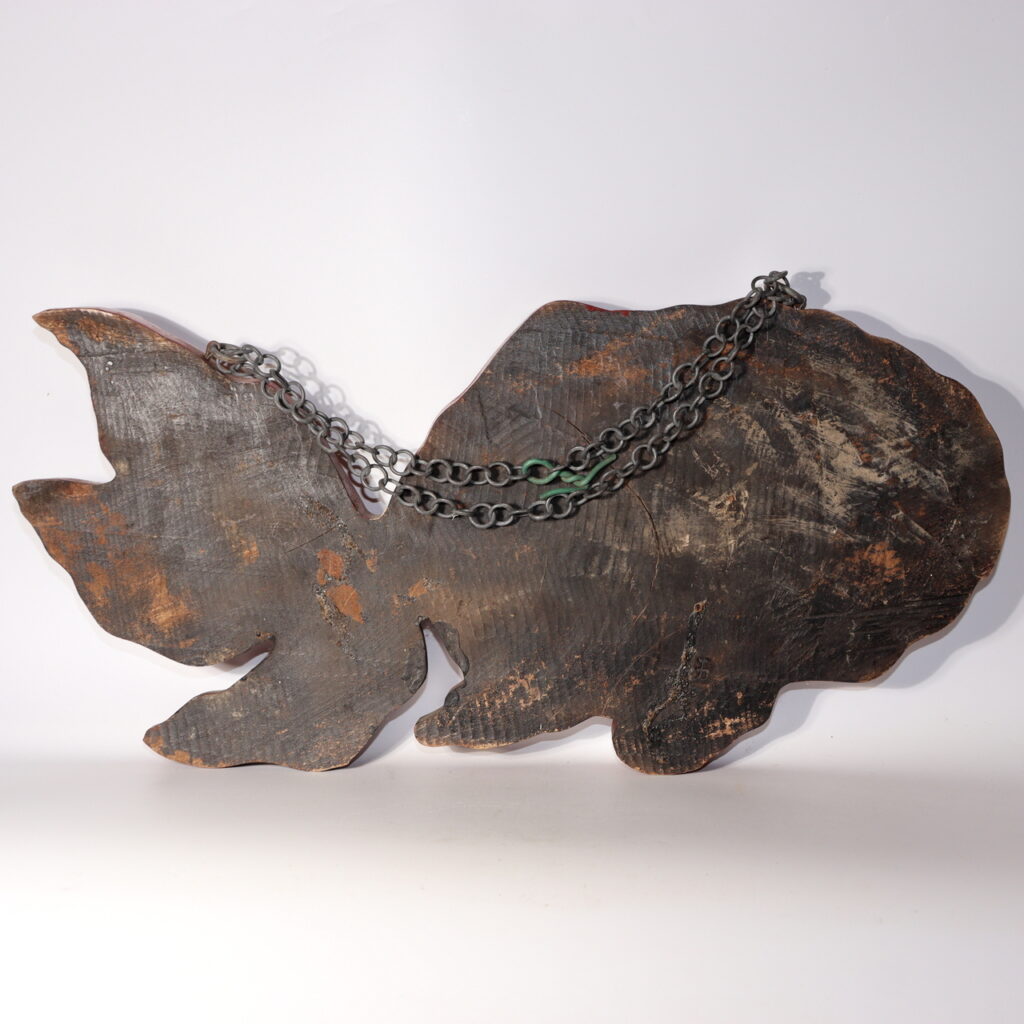
In Japan, even commercial signage can be a canvas for art and symbolism. This goldfish-shaped antique pharmacy signboard, with its playful form and gilded lettering, once beckoned customers to a neighborhood pharmacy. Today, it survives not only as a rare example of Japanese folk advertising, but also as a window into the cultural language of commerce in the early 20th century.
The Story Behind This Piece
This charming piece of Japanese antique signage, known as a kanban, advertises a children’s fever medicine called “Jinmaru.” It likely dates to the Taisho (1912–1926) or early Showa (1926–1989) period, a time of rapid modernization when pharmacies and other commercial establishments began to develop distinctive visual branding.
The goldfish (kingyo) has long been a beloved symbol in Japanese culture. Often associated with good fortune, health, and longevity, it was a fitting choice for a pharmacy promoting wellness. In the context of signage, goldfish were especially favored for their bright colors and eye-catching silhouettes—ideal for drawing the attention of passersby in bustling shopping streets.
What Makes This Item So Special
- Unique Shape and Design: This kanban is hand-carved in the shape of a goldfish, an unusual and creative form rarely seen in modern signage. Its whimsical outline gives it a distinctly Japanese charm.
- Historical Typography: The sign’s surface features hand-painted gold characters, advertising the children’s medicine “Jinmaru.” The lettering retains traces of age, offering both legibility and patina.
- Solid Craftsmanship: Crafted from solid wood, the piece exhibits the hallmarks of folk craftsmanship—functional yet expressive, durable yet poetic.
- Era and Authenticity: The style and materials suggest production during the Taisho to early Showa period, reflecting a unique intersection of traditional Japanese aesthetics and early modern commercial culture.
This kanban, once hung outside a pharmacy, would have stood out vividly among rows of shops—serving both as advertisement and art.
A Treasured Find for Collectors Worldwide
For collectors of Japanese antiques, particularly those interested in folk signage, kanban, or pharmaceutical history, this item holds significant appeal. Its eye-catching form and nostalgic charm make it suitable for:
- Display in folk art museums or interior design galleries
- Decorative use in retail spaces, tea rooms, or cultural centers
- Inclusion in collections focusing on Japanese commercial history, early 20th-century design, or traditional craftsmanship
It also resonates with modern collectors of wabi-sabi design or those seeking one-of-a-kind decorative objects with cultural depth.
Conclusion: Folk Charm and Commercial Art in One Glance
This goldfish-shaped pharmacy signboard is more than just advertising—it is a surviving fragment of Japan’s living, visual culture. From its playful silhouette to its timeworn texture, it reminds us that even the most practical objects were once made with imagination and care. Today, it can once again capture attention—not in a shopping street, but in the home or gallery of a thoughtful collector.
If this item is already sold out, please explore similar treasures in our curated collection of Japanese antiques:
🔗 Browse our full collection